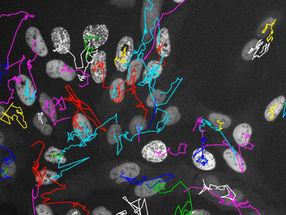Environmental contaminants in foodstuffs
BfR research project on the intake of heavy metals and dioxins completed
The final report of the research project "Foodborne exposure to environmental contaminants" (LExUKon) is now available. In this project scientists of the Federal Institute for Risk Assessment (BfR) have calculated, together with colleagues from the Research and Advisory Institute for Hazardous Substances (FoBiG) and the University of Bremen the amounts of cadmium, lead, mercury, dioxins and polychlorinated biphenyls (PCBs) which consumers usually absorb with foods. According to the study, the main sources for cadmium intake are vegetables and cereals. Lead is primarily absorbed by consumers via beverages and cereals. Methylmercury is mainly contained in fish, whereas dairy products and meat are determining for dioxins and PCBs. "These findings are of high relevance for risk assessment", says BfR President Professor Dr. Dr. Andreas Hensel. "In this way a better assessment of the extent of a possible health risk through contaminated foodstuffs can be made by us". The project report has been published as a brochure (in German) and can be obtained from BfR.
Humans absorb not only valuable substances, such as vitamins and minerals, through foodstuffs but also undesirable substances, such as so-called environmental contaminants which can damage health in certain amounts. These include heavy metals and dioxins, which can migrate into foods through contamination of the air, the water or the soil. In order to be able to assess the risks of these substances, the question arises as to the amounts in which they occur in foodstuffs and the amounts consumers eat of these foodstuffs. This was the focus of the LExUKon project. Standardised methods were developed and applied for the assessment of the amounts of consumption and content data of foodstuffs with environmental contaminants.
This was possible through data from the National Consumption Study II (NVS II) of the Max Rubner Institute (MRI) and the food monitoring by the Federal Office of Consumer Protection and Food Safety (BVL). The intake of environmental contaminants through foodstuffs was determined for the general population, taking into account different consumption habits as well as individual lifestyles. It turned out, for instance, that consumers eat more fish as they grow older and hence absorb, amongst other things, more methylmercury than younger people.
The final report of the research project has been published as a BfR brochure (in German).
Other news from the department science

Get the life science industry in your inbox
By submitting this form you agree that LUMITOS AG will send you the newsletter(s) selected above by email. Your data will not be passed on to third parties. Your data will be stored and processed in accordance with our data protection regulations. LUMITOS may contact you by email for the purpose of advertising or market and opinion surveys. You can revoke your consent at any time without giving reasons to LUMITOS AG, Ernst-Augustin-Str. 2, 12489 Berlin, Germany or by e-mail at revoke@lumitos.com with effect for the future. In addition, each email contains a link to unsubscribe from the corresponding newsletter.























































